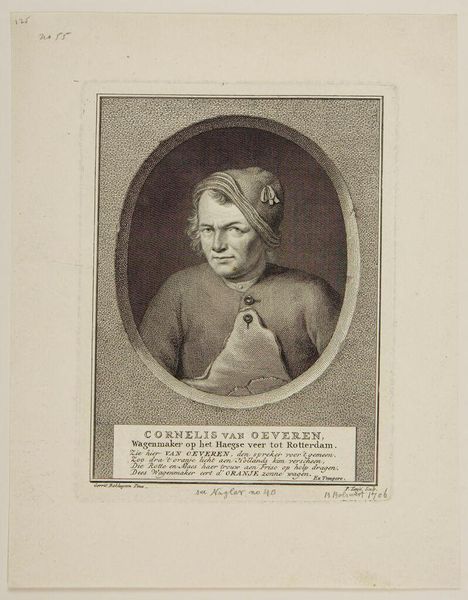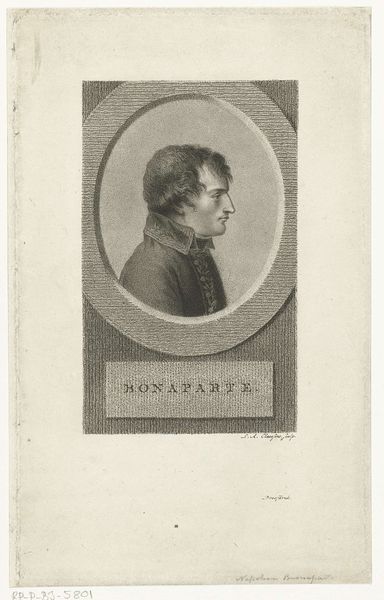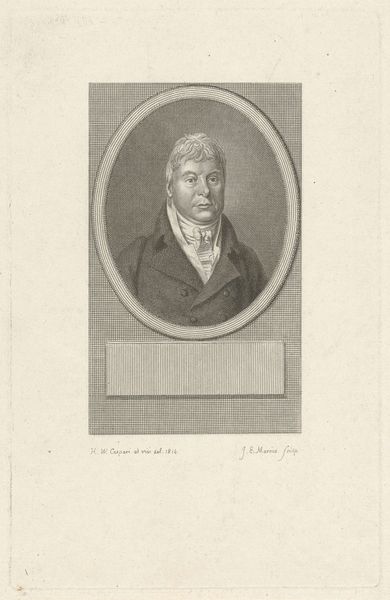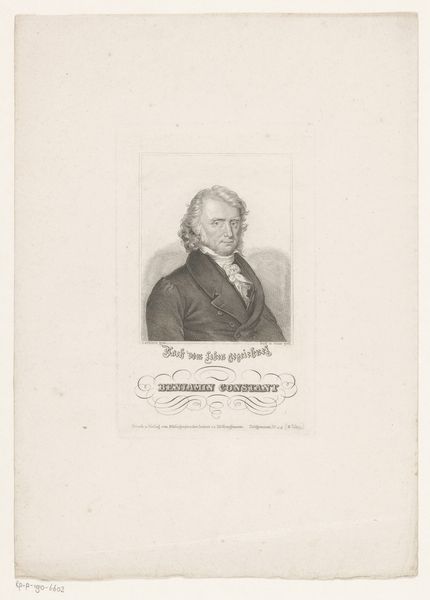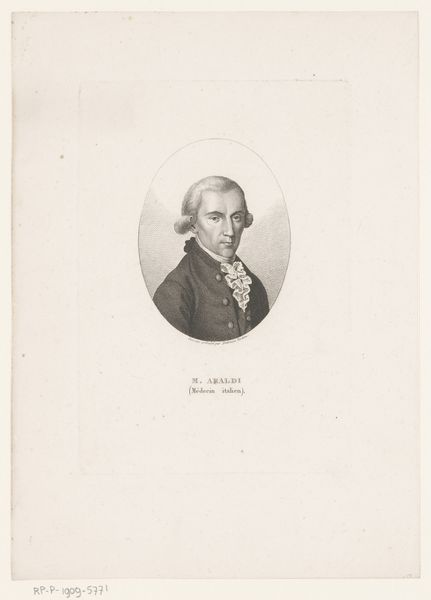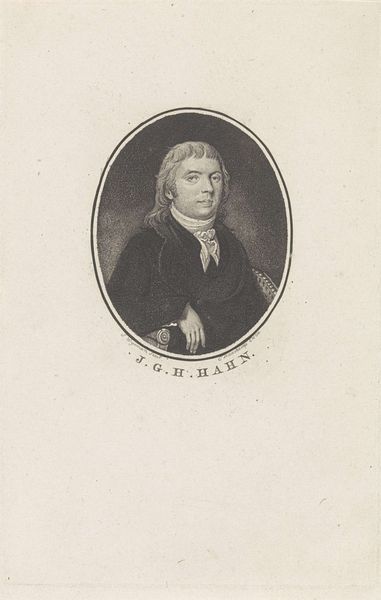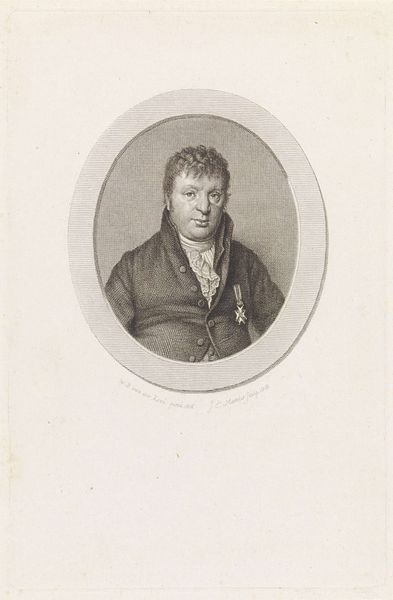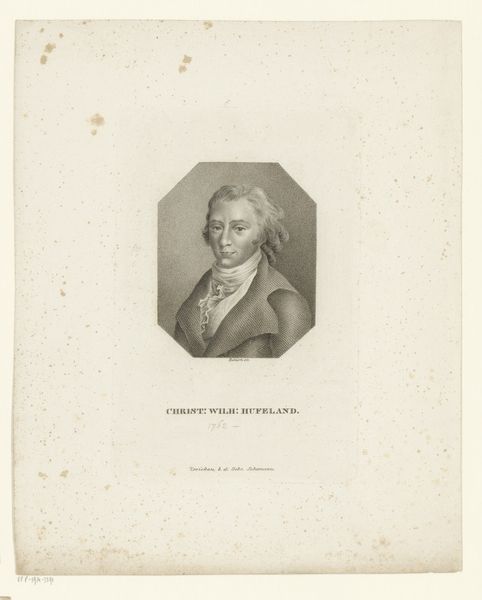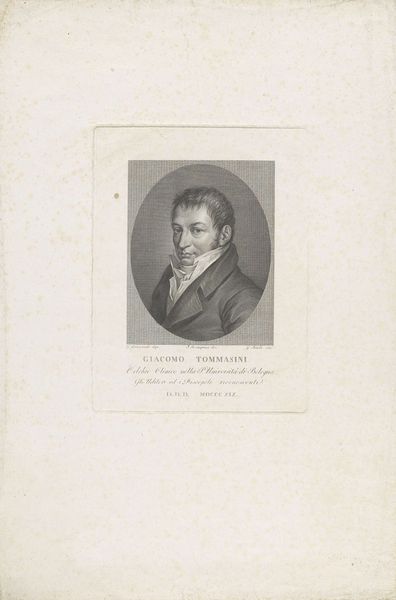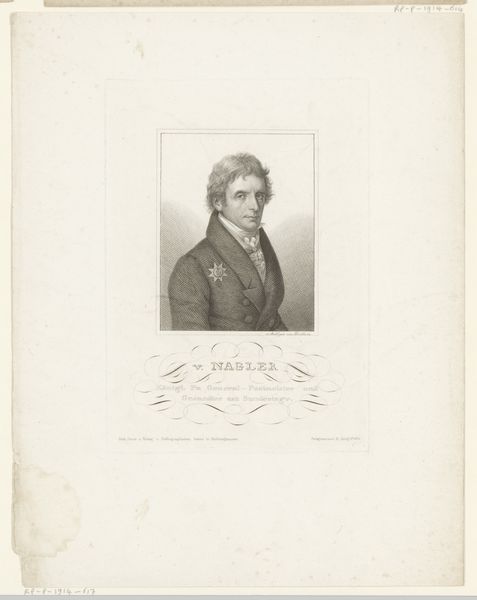
print, engraving
#
portrait
#
baroque
#
dutch-golden-age
# print
#
old engraving style
#
historical photography
#
history-painting
#
engraving
Dimensions: height 192 mm, width 143 mm
Copyright: Rijks Museum: Open Domain
Editor: This is "Portret van Cornelis van Oeveren," an engraving by Pieter Tanjé from between 1716 and 1761. The starkness of the black and white, along with the rigid frame around the central portrait, makes me feel like I'm looking at something almost…industrial. What stands out to you? Curator: I see the potential for an insightful reading through a materialist lens. Look at the subject, Cornelis van Oeveren, identified not by lineage or wealth but by his trade: "Wagenmaker," a wheelwright. The very process of engraving – a labor-intensive, reproducible medium – democratizes portraiture, pulling it away from the exclusive realm of painted commissions. How does that contrast with the clothing and the subject's gaze? Editor: It is interesting how the text on the bottom references "Wagenmaker", in English, wheelwright, which is pretty grounded. I see how this engraving, as a readily reproducible medium, makes art accessible. I also see this common theme reflected in the portrait. He’s dressed plainly, but that penetrating gaze suggests someone of importance, so it creates an odd contrast between the visual and the material. Curator: Exactly. This tension speaks to the evolving social landscape. The burgeoning merchant class gained influence, and prints like this offered them visibility. This image isn't just about Cornelis, the individual, but the labor and craftsmanship associated with this work. Consider too, the context: this is the Dutch Golden Age, fueled by trade and, by extension, the very means of transportation Cornelis helped produce. Are we romanticizing it though? Editor: Perhaps a little bit. Still, focusing on the material production changes my whole understanding of this portrait. The labor, the process of the engraving, the trade of the wheelwright – they all become integral to understanding its significance. Curator: And how those material circumstances reflected social change at the time. Editor: I never considered how an engraving of a man could tell a larger story about labor and societal shifts!
Comments
No comments
Be the first to comment and join the conversation on the ultimate creative platform.
